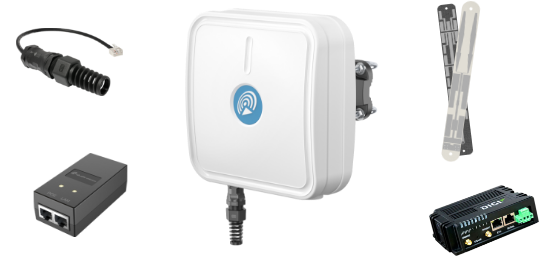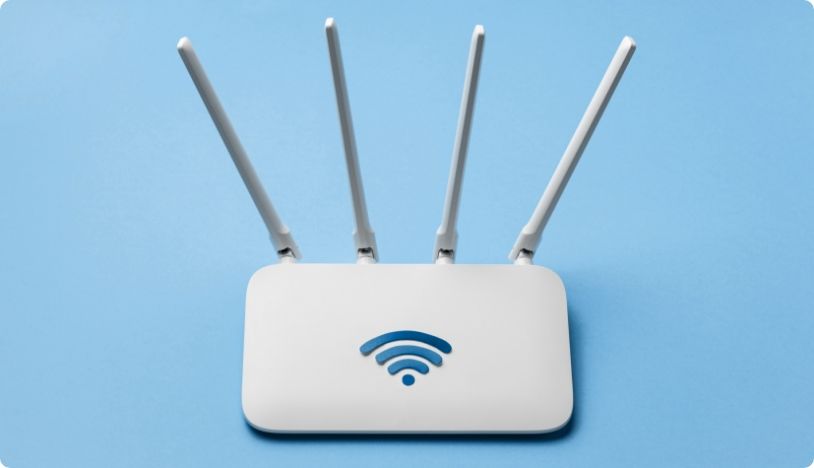READY WI-FI ROUTER / ACCESS POINT DOESN'T MEET YOUR EXPECTATIONS?
There are a lot of Wi-Fi internal and external routers on the market. However, if none of them meets your expectations, remember that you can always build an outdoor Wi-Fi router yourself.
The biggest disadvantage of ready-made Wi-Fi routers is the general functional limitations of ready solutions (the manufacturer decides what you can set and configure). If you are not building a router for yourself, building your own outdoor Wi-Fi router allows you to increase profitability because you offer a unique product with unique functionality.
HOW TO BUILD YOUR OWN OUTDOOR WI-FI ROUTER/ACCESS POINT?
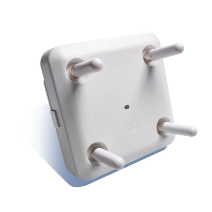
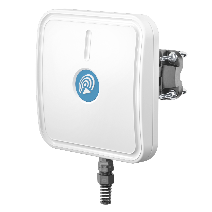
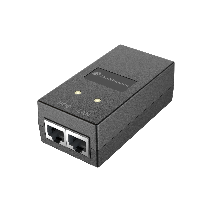
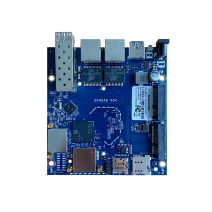


1. CHOOSE YOUR INDOOR/OUTDOOR WI-FI ACCESS POINT.
You have to choose an internal access point with a wide operating temperature range (usually industrial grade routers such as Cisco with external antenna connectors). If you have more time and the right knowledge, especially in terms of software, you can choose a modular solution (separate motherboard, separate wi-fi modules and more complicated configuration, and sometimes even installation of the right software packages).
First, you choose a motherboard dedicated to network solutions, which has Wi-Fi modules embedded or at least one MiniPCI express slot. Remember to choose a motherboard with generally available SDK libraries (the most popular is the OpenWRT system) or with its own software (eg Mikrotik RouterOS). Such boards are produced by e.g. Mikrotik, Compex, WallysTech, CompuLab, Gateworks, etc. and are great choice for your outdoor Wi-Fi antennas!
We also recommend choosing boards that support PoE (Power over Ethernet). Most boards support passive PoE, but if you plan to power the outdoor Wi-Fi router from a PoE switch, you almost certainly need active PoE in the 802.3af / at standard.
2. SELECT WI-FI / BLUETOOTH / LORAWAN MODULES.
Most boards already have built-in Wi-Fi modules and they may be fine for you, but for more advanced projects you may need more radio modules. If your board does not have a built-in Wi-Fi module or you need more Wi-Fi / Bluetooth / LoraWAN modules etc. choose the modules you need (the most popular Wi-Fi module manufacturers are Compex, WallysTech, Mikrotik).
Check in advance if the module is supported by the operating system you are using on the motherboard (sometimes it is enough to support the chipset on which the module is based, but in this case it is better to look for information on online forums).
3. SELECT WI-FI ANTENNA
If you plan to connect an external antenna to your outdoor Wi-Fi router, remember that the optimal parameters of signal level, connection stability and speed will be obtained when your router is mounted inside the outdoor Wi-Fi antenna housing. Thanks to this, you eliminate almost completely large signal losses that occur on coaxial antenna cables. In addition, instead of, for example, 4 outdoor antenna cables necessary for MIMO 4x4 modems, you connect only an Ethernet cable, which will additionally provide power to the outdoor Wi-Fi router via PoE (Power Over Ethernet).
We recommend
Remember that QuWireless offers and designs multi-system antennas to order, so that one housing can contain, for example, outdoor Wi-Fi, 4G / LTE, 5G, Bluetooth, GPS, LoRaWAN antennas and others, as well as the electronics of your choice.
